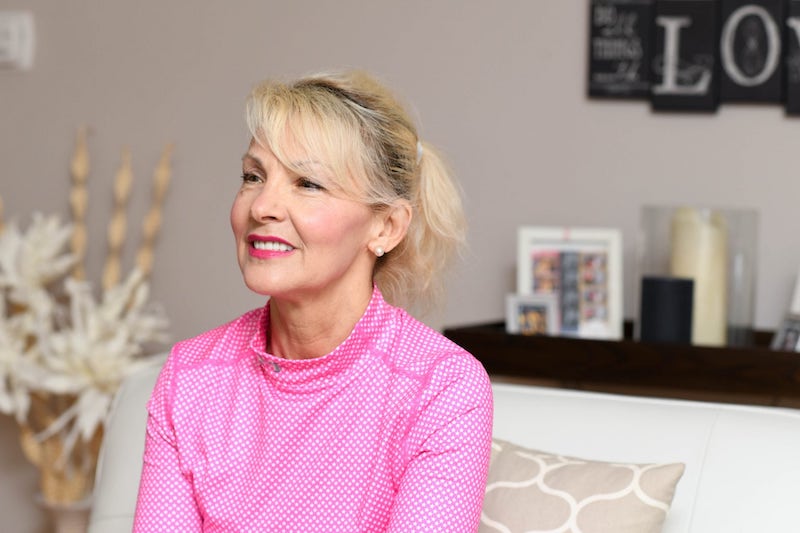Ready For Anything

September 28, 2018
Advanced approach to hip replacement keeps Secaucus woman moving.
Debra Medina, 62, was always on the move. For the past 35 years, she worked in the city, walked miles each day and enjoyed hiking in her free time. So when Debra developed knee pain, physical therapy kept her from slowing down at first. But the problem continued to get worse. Walking with a limp and in constant pain, Debra sought extra help and learned the source of the problem was her hip.
“I had severe arthritis. The hip joint was completely worn of cartilage,” says Debra. “I knew I needed a hip replacement but didn’t want the long recovery of surgery.” Debra searched the internet for the latest techniques in hip replacement and learned about the anterior approach. This advanced technique involves approaching surgery from the front of the hip instead of the back, which results in a host of patient benefits. The approach isn’t new, but it is somewhat rare due to the complexity and technical difficulty of the surgery
Less Invasive Surgery
Through her search, Debra was happy to find Curtis Campbell, M.D., an orthopedic surgeon with Hackensack University Medical Center who has performed hundreds of hip replacement surgeries using the anterior approach. “The anterior approach is a muscle-sparing technique that is less invasive and easier on the patient,” explains Dr. Campbell. “Instead of cutting muscle, which is necessary in traditional surgery, I’m able to work between muscles in the front of the hip, using the natural plane of the body. The result is a more stable hip with less risk of dislocation.” Patients who have anterior hip replacement also have less pain and fewer limitations after surgery, which leads to a quicker recovery.
Accuracy Matters
Dr. Campbell performs total hip replacements using a special table that helps position the hip for an anterior approach. He also uses intraoperative X-ray imaging. “The ability to take X-rays during this type of surgery allows me to identify and make small adjustments throughout the operation,” says Dr. Campbell. “This leads to a more precise fit, which means less wear and tear on the joint, improved patient comfort and increased stability.”
Not Looking Back
Debra underwent anterior hip replacement surgery with Dr. Campbell at Hackensack last year. She was home two days later, never took pain medication and, after just four at-home visits with Hackensack physical therapists, was walking a mile daily without assistance. Today, Debra is as active as ever. She no longer has a limp. And in addition to walking, her fitness routine includes light weights and 75 squats each day. “Dr. Campbell put me at such ease and did an amazing job,” says Debra. “Since surgery, I’m sleeping well, no longer in pain and have no limitations. Soon after surgery, I was wearing a bikini on vacation and dancing with my husband. I would recommend Dr. Campbell to anyone.”
Do you have questions or concerns about treating joint pain? Our care team is available to answer your questions and get you back on the move.
Find a doctor near me
Firing on All Cylinders After Knee Replacement

Recover fully from knee replacement. Learn about robotic surgery with Dr. Kayal at Pascack Valley Medical Center. Schedule your appointment today.
